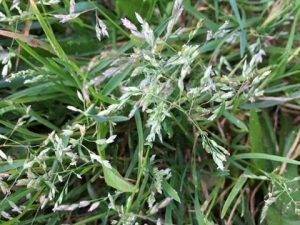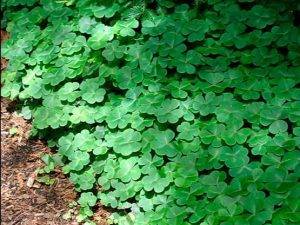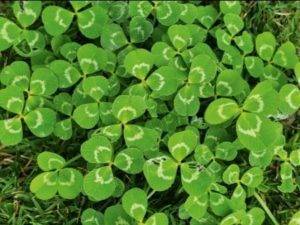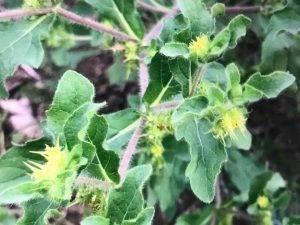Akers Monthly – August 2022
– Common Winter Weeds
Are you struggling with weeds this winter?
Let us help you understand the difference between these common weeds and how to help get rid of them.
Regularly fertilising and watering your lawn not only helps it become healthier but also helps avoid an infiltration of weeds. However, even with a healthy lawn the occasional weed can still appear. When they do it is important to act early. Every weed grows and needs to be treated differently, and identifying them can sometimes be a challenge. We have put together this little guide to the most common winter weeds that are popping up in your turf this season, to help you identify, treat, and remove them.
Winter Grass


Winter Grass is a low growing, thin-bladed grass that grows in pale green tufts. It produces triangular shaped seed heads that can hold many seeds. These seeds spread easily by being carried by the wind, birds, or shoes, and by simply falling off the plant into the soil below. It grows at a faster rate than most lawn types, so is easiest to spot as patches of pale green growing higher than your lawn.
Treating: Winter Grass is best prevented by applying a pre-emergent herbicide in autumn to stop the germination of any new seeds. We recommend OxaFert for kikuyu or buffalo lawns, PendiPro for kikuyu or couch lawns, or Spartan Herbicide for all lawns. If small amounts of Winter Grass are already present in your lawn you can remove them by hand, making sure to not disturb any seed heads that have grown. For buffalo and couch lawns you can also apply Amgrow Winter Grass Killer to help control existing growth.
Soursobs


Soursobs have clover-like leaves, produce yellow flowers, and have a long white tuberous root. They are easily identified by the black spots on their leaves. Their growing season is June to October. Soursobs grow from a bulb and carry up to 20 secondary bulbs called bulbils along its root. Each bulbil will eventually detach to produce a Soursob of its own.
Treating: It is important to target Soursobs while they are juvenile and before flowering, as bulbils generally form when the plant is flowering. Soursobs are very resilient to selective herbicides and should never be hand-pulled as that causes the bulbils to detach and grow into a new weed. The best method is to try to deplete the bulb by taking the tops off the plant with regular weekly mowing. Alternatively, we have found that our Seaweed and Gone treatment does affect Soursobs, but may need a repeat application for this stubborn weed.
Oxalis


Oxalis is a very invasive clover-like weed that has three green or purple unmarked heart-shaped leaves, and produces pink, yellow, or white flowers. It is fast growing, spreads laterally, and roots into the ground wherever the stem touches the soil. It also carries a seed pod that when mature they dry out and explode, spreading fine seeds throughout your lawn and garden.
Treating: Oxalis will usually need repeat applications of any treatment used and is not recommended to be hand-pulled as it can regrow from a small piece of root left. It can be treated with a selective or broadleaf herbicide such as Bow and Arrow or Lawn Solutions All Purpose Weed Control. We can treat Oxalis for you with our Seaweed and Gone treatment as it contains broadleaf herbicide. In some cases, a treatment of pre-emergent herbicide in autumn and spring can also help prevent seeds germinating.
Clover


Clover can be identified by its three green oval-shaped leaves, long stems, and white or pink ball-shaped flowers. The leaves often have a white ring near the base of the leaf. It grows all year round and can be used as an effective ground cover. It has long creeping stems that can grow new plants, and seeds that can stay dormant for years in the soil. Clover like to grow in poorly fertilised lawns with low nitrogen, therefore a good method to prevent it growing is to make sure your lawn is healthy and well fertilised.
Treating: Clover can be hand-pulled when it first appears, but if the whole root system isn’t removed it will grow back. The best treatment is a broadleaf herbicide such as Bow and Arrow, Lawn Solutions All Purpose Weed Control, or ProForce Duke 100 WG Herbicide. Ensure to also apply a high nitrogen fertiliser. Our Seaweed and Gone treatment will also help treat Clover.
Bindii


Bindii is a low growing weed with small feathery leaves that produces a small yellow flower. At maturity, the flower forms a prickly seed pod. The seed pod is easily transferred to other lawn or garden areas by mowing, pets, or shoes, where it will grow more plants. Bindii start germinating in autumn, so the best time to target it is in winter before it produces a seed pod.
Treating: Bindii can be hand-pulled when it first appears, but if there are too many growing a selective herbicide is the easiest method. We recommend using Bow and Arrow, Lawn Solutions All Purpose Weed Control, or ProForce Duke 100 WG Herbicide. In some cases, a treatment of pre-emergent herbicide in autumn and spring can also help prevent seeds germinating.
Please note when using the above herbicides it is best to wait until the products have dried and absorbed before letting your pets and /or children back on to the lawn.
All of the products mentioned are available to purchase instore or online with exceptions of our Seaweed and Gone Spray which is only available as a service, call us on 8326 3255 to organise. Please ensure the products you choose are safe for your variety of turf before applying.
Product of the Month

We have paired with Adelaide’s Garden Guru, Michael Keelan, to package Akers Organic Chicken poo, a natural, environmentally friendly product that has all the benefits of chicken poo and much less mess. Using composted chicken manure, our product is steam treated to stabilise the nutrients and maximise nutrient uptake, and then made into a pellet form.
Due to their varied diet, chicken poo provides valuable nutrients needed for efficient plant uptake, including high levels of calcium, and a slow-release source of both macro and micro-nutrients. Adding to simple soil transforms it to create the perfect foundation for planting.
Akers Organic Chicken Poo can be used for new planting, natives, roses, established plants and for topdressing vegetable beds!
Come instore to purchase or call us to put aside for collection.
Dal’s Gardening Tips for August
- Prune your roses 90 days before you want them to flower. After pruning, spray roses with Lime Sulphur to help eliminate fungal spores and eggs from pests, giving your roses the best start for spring. It is best done during winter, as if applied during growing season, it may defoliate the plant. This is highly recommended for rose gardens that have trouble with black spot and mildew during the growing season.
- Add Akers Organic Soil Builder and re-mulch garden beds, being careful not to apply directly to the stem of the plant.
- Feed citrus and other productive trees with Akers Organic Based All-Rounder Plant Fertiliser.
- Finish planting bare rooted fruit trees by early August.
- Turn over your soil and add Akers Organic Soil Builder and our Michael Keelan approved Organic Chicken Poo to ready all the gardens for spring planting.
As always, thank you for your support
Best wishes,
Dal, Jacqi and the Akers of Lawn team
